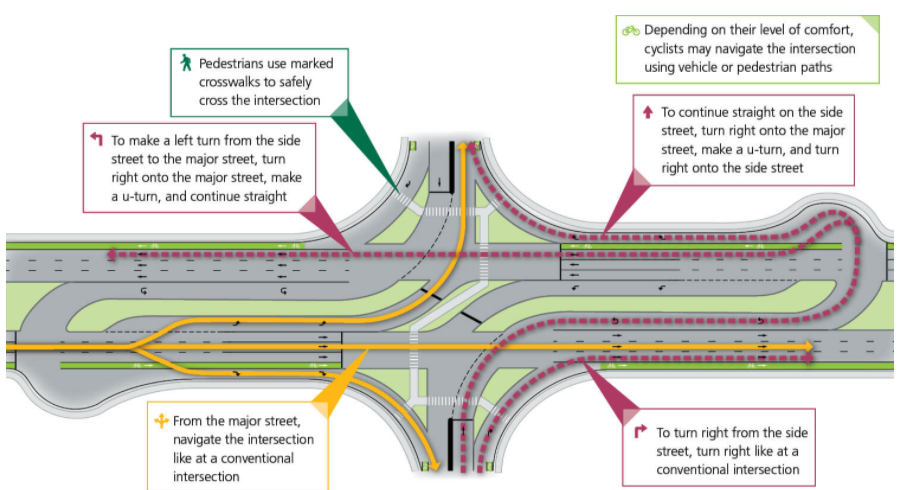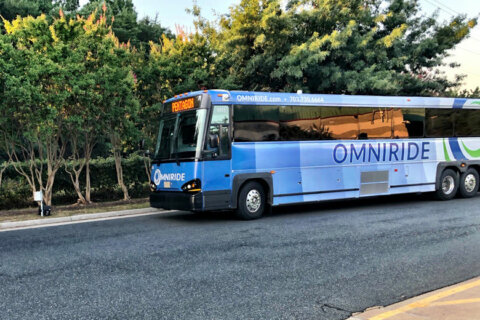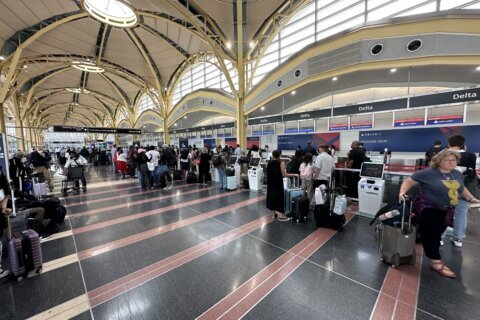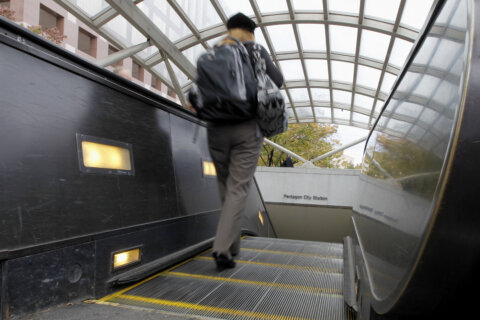Drivers whose commutes include the often-infuriating stretch of Va. Route 28 between Manassas Park and Fairfax County have likely noticed recent traffic flow tweaks to roadway configurations.
However, the biggest change is still to come — a rare-to-this-area type of intersection that aims to keep traffic flowing, while reducing the number of “conflict points,” where serious crashes can occur.
The intersection is called Restricted Crossing U-Turn or RCUT.
Virginia Del. Danica Roem, D-Prince William, grew up in Manassas, near Route 28, and has spearheaded the effort with the Virginia Department of Transportation to find ways to keep traffic moving on Route 28.
Roem said typically there are between 70 and 100 crashes per year in the stretch of Route 28. The road has been two lanes northbound and two lanes southbound, with signalized intersections that require a driver on a side street to make a risky dash to make a left turn onto Route 28.
The plan would replace the five current signalized intersections with RCUTs.

A series of RCUTs would replace current dangerous intersections on Va. Route 28.
In an RCUT, all vehicles on side streets would enter Route 28 with a right turn.
Roem offered an example: “Let’s say you’re coming out of the Dunkin’ Donuts at Leland Road, and you want to go south, into the City of Manassas. Instead of waiting at the traffic light and turning left, you would make a right turn, you would get into the median, and then you would make a U-turn from the median.”
Turning right to go left may seem familiar to some drivers.
“This is not the same thing as a New Jersey jughandle, I have to stress that,” Roem joked. “Jughandles are right turns. This is a a left turn, from the median.”
In addition to the two primary goals of increasing safety and increasing the number of cars traveling straight on Route 28, another major benefit is the RCUT is a far cheaper, and less intrusive way to keep cars moving than building grade-separated interchanges.
“It’s done within the existing imprint of the road, and only needs a very minor amount of eminent domain, without condemning people’s homes, and without taking away people’s businesses,” Roem said.
The RCUTs will partially eliminate the need for stop signals: “On some we’ll be able to remove the lights; on others, we’ll be able to reduce the signal phases.”
Roem’s initial campaign, leading to her election in 2017, included grade-separated interchanges that are currently being built and driven upon, in Centreville, where Interstate 66 and Route 28 cross.
However, the challenge was different in Manassas Park, where businesses and homes already lined Route 28. As Roem talked with local leaders, while seeking funding to complete the project, she became open to alternatives to her initial, expensive vision.
The entire 2.1-mile stretch of Route 28 can be improved with RCUTs, for the cost of a single interchange.
“It’s much, much, much, much less — and they accomplish the same thing,” Roem said. “I’m willing to compromise, I’m willing to embrace new ideas, if it means we can get the job done, if it has the same effect, and does it for a lot less taxpayer money.”
The Commonwealth Transportation Board is considering Roem’s Smart Scale application, which uses a grading system to prioritize projects to benefit the region.








